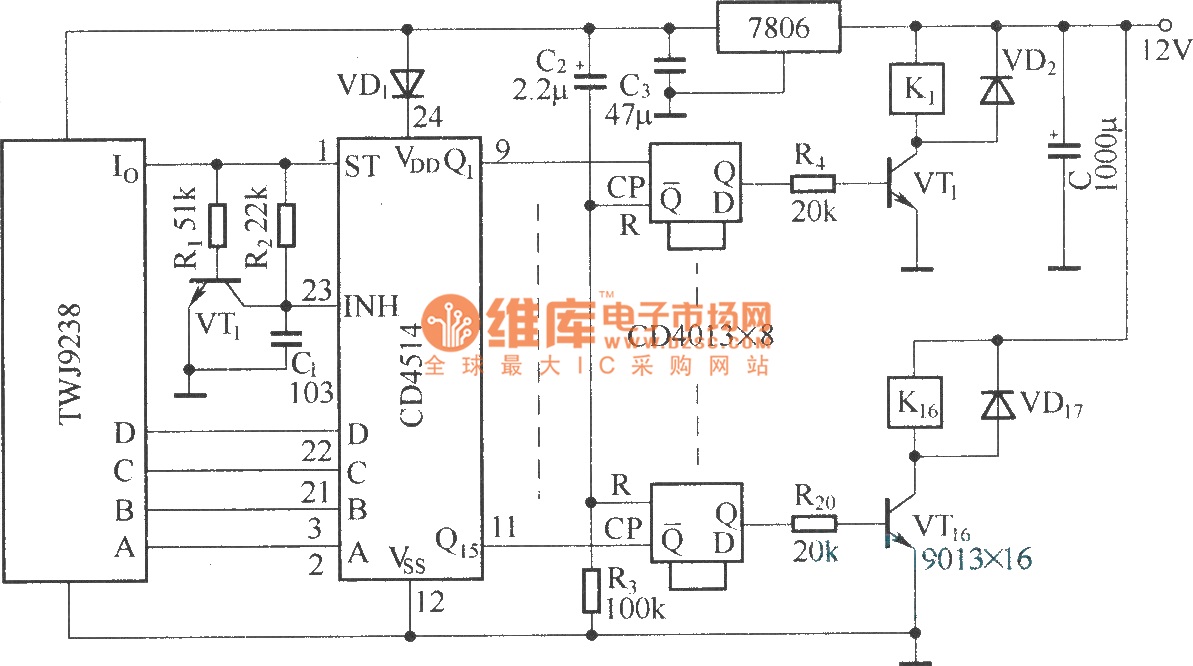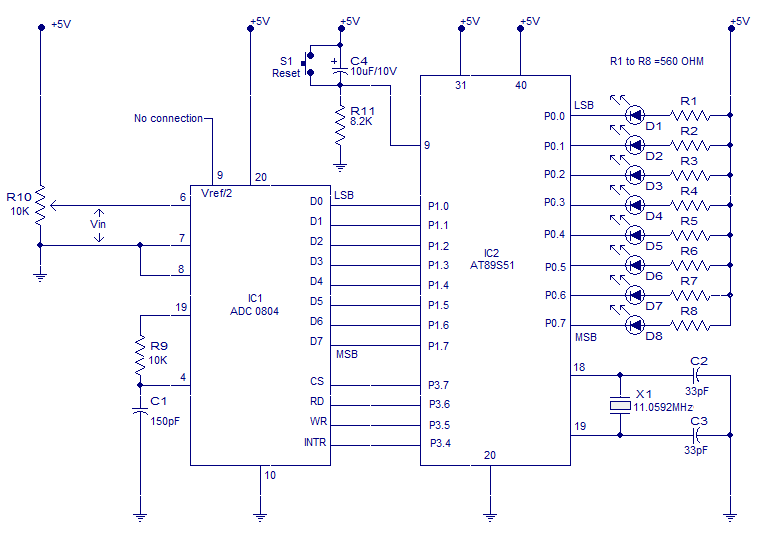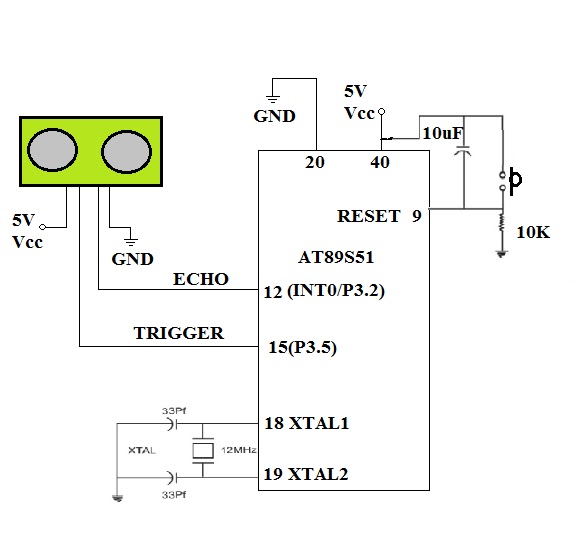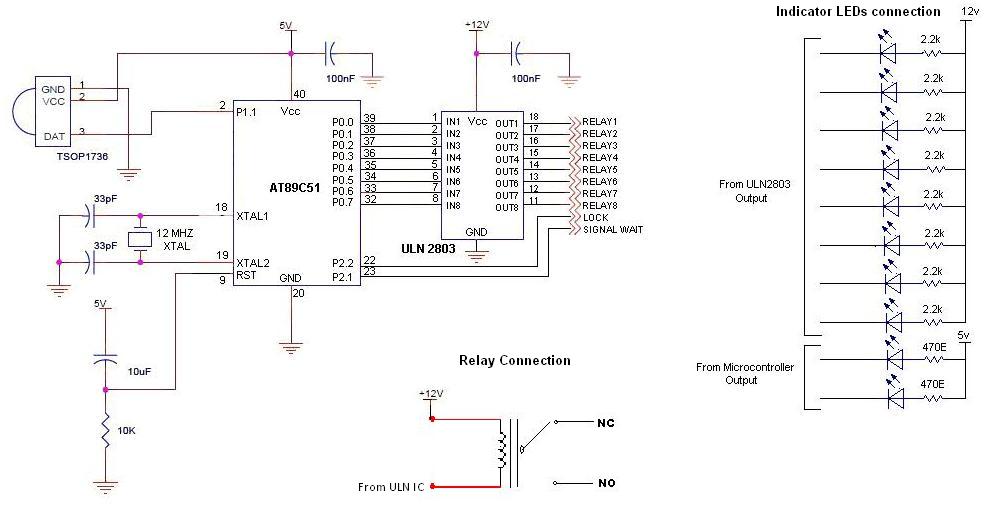
RC5 Protocol Decoding with 8051
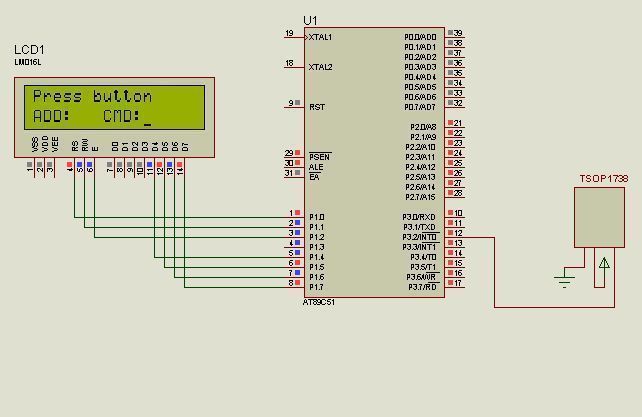
Infrared light is electromagnetic radiation with longer wavelengths than those of visible light. It is utilized in various industrial, scientific, and medical applications. Most remote controllers employ infrared light to transmit information. This protocol was developed by Philips using Manchester Encoding. Information is transmitted in frames, with each frame consisting of 14 bits. The first two bits are start bits, followed by a flip bit that toggles with each subsequent frame if the same command is sent. The next five bits represent the system address, which is specific to the remote, and the final six bits contain the command, which holds the actual instruction. Each bit is composed of 64 infrared pulses. All bits in an RC5 transmission have a uniform duration and include one transition. A `0` is encoded by a high-to-low transition, while a `1` is encoded by a low-to-high transition. There is a transition in the middle of each bit; thus, a bit with a `0` value is represented by the first 32 high pulses followed by 32 low pulses, whereas a `1` is represented by the first 32 low pulses followed by 32 high pulses.
The RC5 protocol operates by transmitting data using infrared light, which is emitted by an infrared LED in the remote control. The encoding scheme ensures reliable communication between the remote and the receiving device, typically a television or other appliance. Each frame begins with two start bits that signal the beginning of a new command sequence. The flip bit serves as a mechanism to differentiate between repeated commands, which is essential for preventing unintended actions when the same command is sent multiple times.
The system address bits are critical for identifying the specific device that the remote is intended to control, allowing multiple devices to be operated by different remotes without interference. The command bits determine the specific function to be executed, such as changing the channel or adjusting the volume.
In terms of signal transmission, the uniform duration of each bit is vital for maintaining synchronization between the transmitter and the receiver. The transitions between high and low states are what convey the binary information, with the timing of these transitions being precisely defined to ensure accurate interpretation of the data by the receiving device.
The encoding of the bits, particularly the distinction between `0` and `1`, is achieved through the modulation of the infrared light pulses. The use of Manchester Encoding not only facilitates error detection but also ensures that there is always a transition in the middle of each bit, which aids in clock recovery at the receiver end. This robustness makes the RC5 protocol widely adopted in consumer electronics for infrared remote control applications.Infrared light is electromagnetic radiation with longer wavelengths than those of visible light. Infrared light is used in industrial, scientific, and medical applications. Most of the remote controllers use IR light to send information. This protocol was developed by Phillips using Manchester Encoding. Information is sent in frames, where each fr ame is consist of 14 bits. First two bits are start bits, the next bit is flip bit, which toggles every next frame if same command is sent. Next five bits are system address (remote specific) bits and last 6 bits are command bits, which actually stores command.
Each bit is of 64 IR pulses. Every bit in an RC5 transmission has uniform duration, and contains one transition. `0` is encoded by a high to low transition, and a `1` by a low to high transition. There is a transition in the middle of the bit. So bit containing `0` value will be encoded as first 32 high pulses and next 32 low pulses, while `1` will be represented by first 32 low pulses and next 32 high pulses. 🔗 External reference
The RC5 protocol operates by transmitting data using infrared light, which is emitted by an infrared LED in the remote control. The encoding scheme ensures reliable communication between the remote and the receiving device, typically a television or other appliance. Each frame begins with two start bits that signal the beginning of a new command sequence. The flip bit serves as a mechanism to differentiate between repeated commands, which is essential for preventing unintended actions when the same command is sent multiple times.
The system address bits are critical for identifying the specific device that the remote is intended to control, allowing multiple devices to be operated by different remotes without interference. The command bits determine the specific function to be executed, such as changing the channel or adjusting the volume.
In terms of signal transmission, the uniform duration of each bit is vital for maintaining synchronization between the transmitter and the receiver. The transitions between high and low states are what convey the binary information, with the timing of these transitions being precisely defined to ensure accurate interpretation of the data by the receiving device.
The encoding of the bits, particularly the distinction between `0` and `1`, is achieved through the modulation of the infrared light pulses. The use of Manchester Encoding not only facilitates error detection but also ensures that there is always a transition in the middle of each bit, which aids in clock recovery at the receiver end. This robustness makes the RC5 protocol widely adopted in consumer electronics for infrared remote control applications.Infrared light is electromagnetic radiation with longer wavelengths than those of visible light. Infrared light is used in industrial, scientific, and medical applications. Most of the remote controllers use IR light to send information. This protocol was developed by Phillips using Manchester Encoding. Information is sent in frames, where each fr ame is consist of 14 bits. First two bits are start bits, the next bit is flip bit, which toggles every next frame if same command is sent. Next five bits are system address (remote specific) bits and last 6 bits are command bits, which actually stores command.
Each bit is of 64 IR pulses. Every bit in an RC5 transmission has uniform duration, and contains one transition. `0` is encoded by a high to low transition, and a `1` by a low to high transition. There is a transition in the middle of the bit. So bit containing `0` value will be encoded as first 32 high pulses and next 32 low pulses, while `1` will be represented by first 32 low pulses and next 32 high pulses. 🔗 External reference


